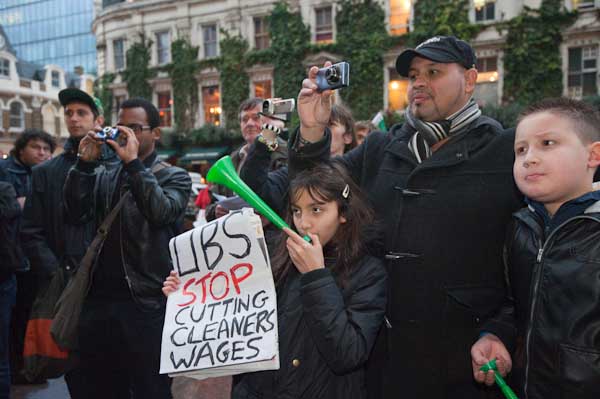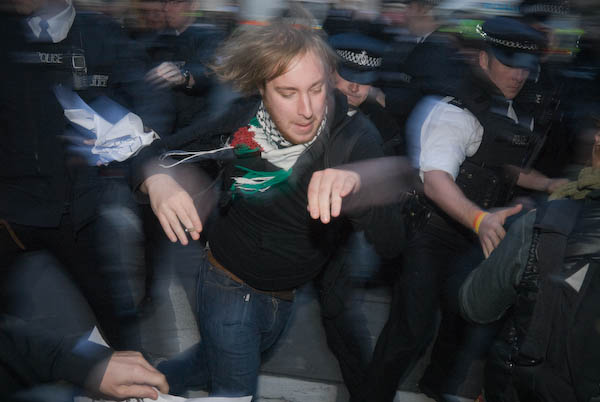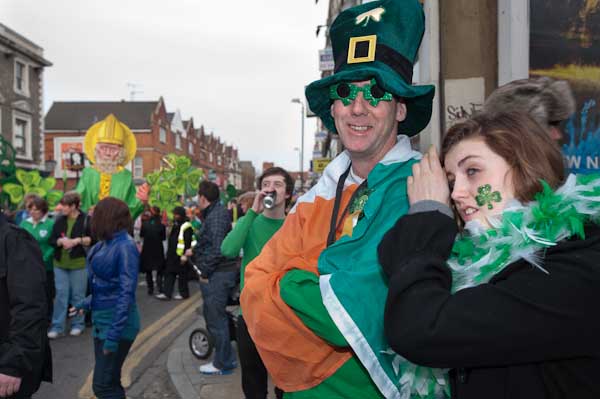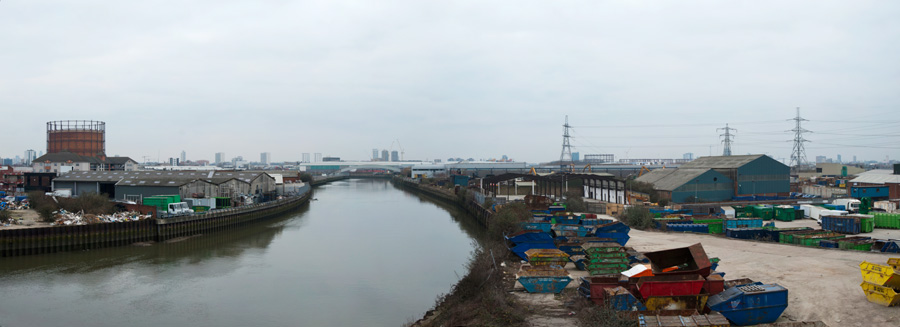Yesterday, as I read on PDN Pulse, an exhibition opened in Dhaka, Bangladesh with police barricading the doors of the Drik Agency where it was being shown.
The statement on Drik reads:
Drik Picture Library was forcibly closed down by the police today to prevent the launch of Pathshala, South Asian Media Academy, and the unveiling of a photography exhibition by photojournalist Dr Shahidul Alam, `Crossfire.’
From midday onwards, Drik was pressurised by RAB, police and Special Branch officials to close down the show on grounds that it does not have official permission, and later, on the grounds that it will create anarchy.
In its 20 years of existence, Drik has forged a unique position in the international cultural arena, which has earned Bangladesh a special place in the world of photography. The unfortunate event which was broadcast worldwide has tarnished the image of this democratically-elected government. We call upon the government to immediately remove the police encirclement, so that the exhibition can be opened for public viewing, and Bangladesh’s image as an independent democratic nation can be reinstated.
The show, with photographs by Drik’s founder Shahidul Alam and curated by Jorge Villacorte from Peru with research by Momena Jalil, Tanzim Wahab and Fariha Karim, was scheduled to be open to the public at the Drik Gallery until 31 March 2010 but currently can only be viewed on line due to the police action.
‘Crossfire’ gets its name from the statements issued by the RAB (Rapid Action Battalion) , a sinister black-clad group formed six years ago from members of Bangladesh Police, Bangladesh Army, Bangladesh Navy and Bangladesh Air Force which carries out extra-judicial killings and torture of people in custody. Set up in 2004 by Law Minister Moudud Ahmed, they have killed over 1000 people, whose bodies are then dumped in fairly random locations and a stock press release states that they were “killed in crossfire” between the police and criminals. A new word, “crossfired” has been added to the vocabulary.
As Alam say, the facts of these murders by the RAB are already largely well known, and a court which tried to investigate them was recently dissolved by the Chief Justice immediately before the Government was to give evidence. The installation at Drik in his words aims to “to reach out at an emotional level. I aim to get under the skin. To walk those cold streets. To hear the cries, see terror in the eyes. To sit quietly with the family besides a cold corpse. But every photograph is based on in-depth research. On actual case studies. On verifiable facts. A fragment of the story has been used to suggest the whole. A quiet metaphor for the screaming truth.”
The large format colour pictures show scenes where these killings occurred, and had to be taken in secret, often early in the morning – also a favourite time for the murders. The existence of the show also had to be kept secret, and it was only announced on the 16 March, when Where Death Squads Struck in Bangladesh was published in the Lens blog of the New York Times with a slide show of the pictures.
On ShahidulNews you can read more about Crossfire, with a Google Map giving details of many of the killings and their locations, and a dark video, ‘RAB Night Walk‘.
Shahidul Alam is Bangladesh’s best known photographer and his work has often before been controversial. Last November a show on Tibet at the gallery was closed down by the police following pressure from the Chinese government, and the web site was hacked and fake virus warnings put on it to deter people from viewing it. Thirteen years ago, as the Lens article relates, Alam was set on in the street by a group of men who pulled him out of a rickshaw, stole his camera and computer and stabbed him 8 times – in what he describes as “a particularly unsubtle warning” about his opposition political activities.




